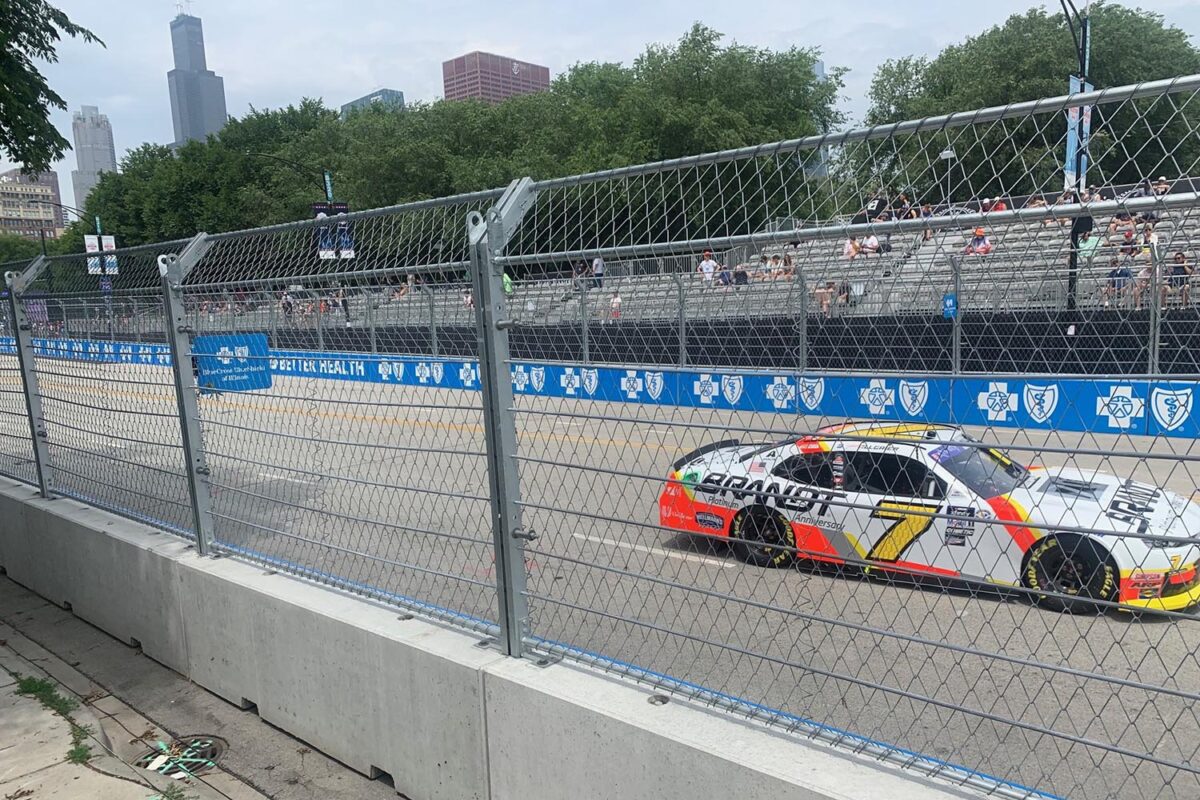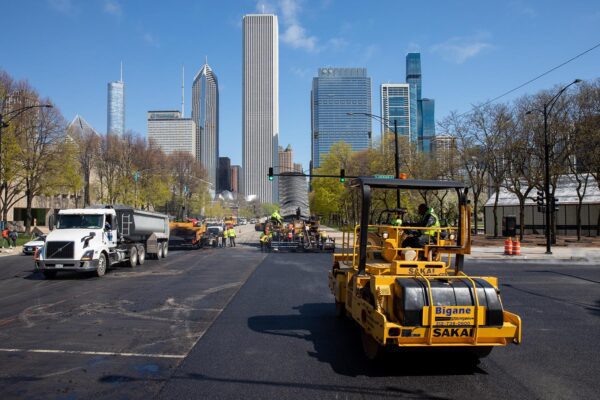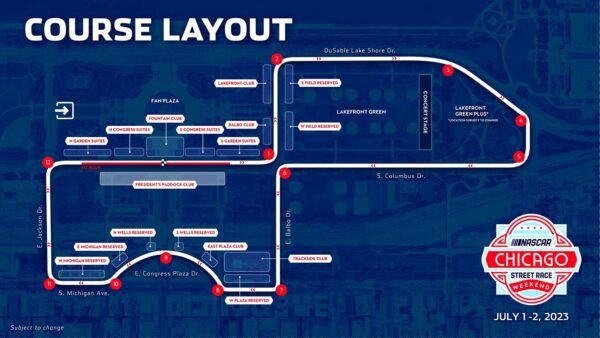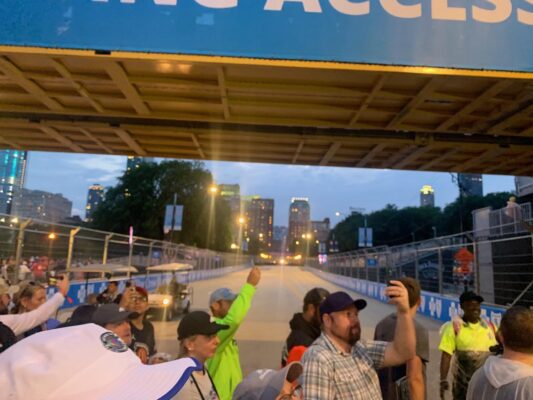
In early July, Chicago hosted its first-ever NASCAR street race. The exciting and highly-anticipated event melded the iconic NASCAR Cup Series with our iconic city. North DuSable Lake Shore Drive (NDLSD), Michigan Avenue, and Columbus Drive were transformed into a 12-turn, 2.2-mile street course. In addition to the racing, the event included a festival atmosphere with affiliated events, live music, and food and merchandise vendors.
But before the spectators arrived, the bands started to play, and the command of “Gentlemen, start your engines” was delivered, those Chicago streets had to be ready to accommodate the demands of high-performance race cars traveling at 100 miles per hour.
Civiltech, through the C*NECT program, provided the engineering to the City of Chicago to create the construction documents for the infrastructure improvements. To begin the process, the NASCAR organization provided a list of changes and improvements they wanted to include to prepare the course. The design team first reviewed this list to ascertain the feasibility and prioritize the requests. The review was also intended to ensure that the changes would be positive infrastructure improvements that would benefit the City long term, not only for the race. The scope of the project was expanded beyond what was required for this year’s race to ensure that the course would be ready for the races scheduled for the next two years as well as the motoring public and all other events held in Grant Park.
Once the improvements were agreed upon, the team prepared the design plans. The scope of work included pavement patching and resurfacing on Jackson, Balbo, Michigan, Columbus and NDLSD as well as new full depth concrete pavement on Michigan Ave. The design team worked closely with CDOT Engineering, Quality Assurance, and the NASCAR track design team to make sure the work would meet all parties needs for race day as well as the over 100,000 vehicles that use the roads on an average day.
At the pit row location, new concrete sidewalk was poured at 8” thickness, the equivalent of driveway depth, to allow it to serve as a loading and staging area and accommodate trucks. Concrete bus pads were installed at locations throughout the course to improve sections of roadway worn down from CTA buses. Additional sidewalk work included extensive improvement to walking surfaces that would serve not only this event but the many events held annually in Grant Park. 
Improvements that were executed specifically to NASCAR specifications included the installation of a special joint filler and the detailing of specific joint locations to minimize the impacts to the roadway surface that the turning vehicles would create. The team also found creative solutions to some of the existing problems. The bridge approaches on Jackson and Balboa Drives were constructed so that the vertical curve of the bridge structure was tying in to a differently angled curve on the roadway. Rather than resurface the bridge approaches the design plans called for a planer to grind out the hump where two vertical curves met and created a smoother transition.
Besides resurfacing, some roadways received full depth pavement patching using Stone Matrix Asphalt (SMA) mix. This is a product and process that CDOT already applies to high volume roadways like DLSD and Columbus Drive. 
Another important feature of the course design, was that there were no geometric changes; it was designed completely within the existing street configuration. The main need for this is that these roads fall under both City and State jurisdiction and any changes to IDOT routes would require a lengthy review and approval process. The east-west leg of track on the south end of the course is a short segment of Roosevelt Road that connects Columbus Drive to NDLSD. At that location, the driving path crossed to the opposite side of the roadway to preserve the landscaped median on Roosevelt and keep the road within the current configuration.
The primary project challenge was completing the project in time for the event. Plans and specifications were prepared within an aggressive schedule to ensure that the construction could occur in a tight timeframe between other Grant Park events. The work could not begin until after the annual Shamrock Shuffle, Chicago’s popular St. Patrick’s Day 8K running event held on March 26. The construction then needed to be completed by the Sueños Music Festival on May 27, creating a tight, 2-month window in which to complete the construction. 
It was exciting and rewarding to see the race become a reality bringing thousands of NASCAR fans to the City and adding another spectacular event with Grant Park as the venue. Civiltech was proud to lead the design and engineering on this important project and to be part of this premier Chicago event.
